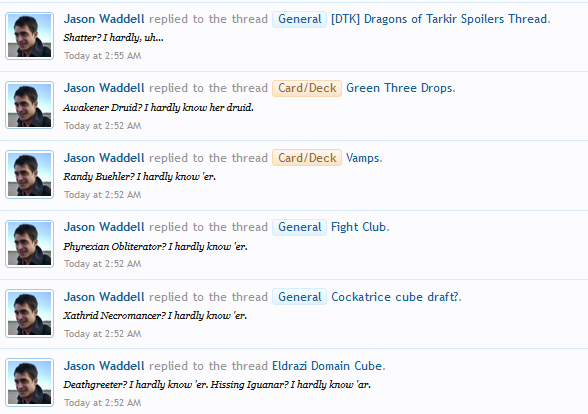Onderzeeboot
Ecstatic Orb
So... If I understand correctly, you have a 720 cube because you want to arrive at ~23 playables after a draft? ... First, why do you think you need 720 to arrive at ~23 playables? You can arrive at the same ratio of playables in a 450 cube. More importantly however, in my mind more playables means harder decisions during deckbuilding. If you only get 23 playables, the deck practically builds itself, why is that a positive in your mind? If you end up with 30 playables, you have to make hard decisions on what cards to cut, and there's more room for wrong decisions during deckbuilding. This rewards people better at card evaluation and better deckbuilders (not to be confused with better players), which I think is awesome. More playables is therefore preferable from my point of view.
Once again, I'm not trying to convince you to cut back*, but so far I haven't heard a single reason that actually makes sense to me. All of the things you are trying to accomplish through using a large cube can be achieved in a smaller cube.
And, on a final note, the choice for you is not between 720 and 360. You keep stressing the 360 number with 0% fractioned archetypes, but there are lots of sizes in between that give you the variety and variance you seek.
*Well, to be fair, I am kinda trying to convince you that a small cube has advantages that outweigh those of a large cube. But you can draw your own conclusions on whether that has any impact on the size of your cube
Once again, I'm not trying to convince you to cut back*, but so far I haven't heard a single reason that actually makes sense to me. All of the things you are trying to accomplish through using a large cube can be achieved in a smaller cube.
And, on a final note, the choice for you is not between 720 and 360. You keep stressing the 360 number with 0% fractioned archetypes, but there are lots of sizes in between that give you the variety and variance you seek.
*Well, to be fair, I am kinda trying to convince you that a small cube has advantages that outweigh those of a large cube. But you can draw your own conclusions on whether that has any impact on the size of your cube

